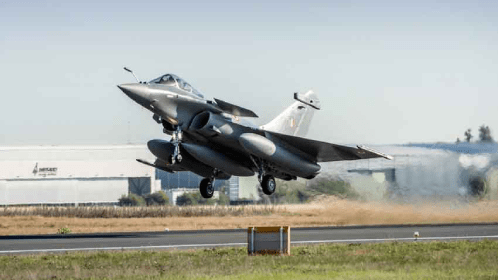KARACHI – May 7, 2025
In a dramatic escalation of military tensions between Pakistan and India, five Indian fighter jets were reportedly downed by Pakistan’s armed forces following overnight strikes by India on six sites within Pakistani territory. The strikes, which began shortly after 1am on Wednesday under what India termed “Operation Sindoor,” targeted areas in Punjab’s Sialkot and Bahawalpur districts as well as regions in Azad Jammu and Kashmir (AJK), including Kotli, Bagh, and Muzaffarabad.
According to the Inter-Services Public Relations (ISPR), India carried out the air strikes from within its own airspace. DG ISPR Lt Gen Ahmed Sharif Chaudhry, during a 4am press briefing, confirmed that eight civilians were initially reported dead. By early morning, the civilian death toll had risen to 26 with at least 46 others injured. Strikes reportedly targeted multiple civilian structures including mosques in Bahawalpur, Muzaffarabad, Kotli, and Muridke.
In response, Pakistan’s Air Force engaged incoming aircraft in a counter-operation. Information Minister Attaullah Tarar confirmed the downing of two Indian jets by 2:45am, followed by a third Rafale fighter an hour later. By 5am, confirmations came in for the destruction of two additional jets, bringing the total to five — including three Rafale, one Su-30, and one MiG-29 aircraft. Pakistan also reported shooting down several unmanned aerial vehicles (UAVs), including quadcopters and drones.
Tarar stated in a televised briefing that Indian military posts were also destroyed in retaliatory missile strikes across the Line of Control (LoC), including a brigade headquarters and multiple checkposts in the Dudhnial and Kot Kotera sectors of AJK. He emphasized that Pakistan had refrained from targeting civilians in its response.
As the crisis deepened, Prime Minister Shehbaz Sharif summoned an emergency meeting of the National Security Committee (NSC) for 10am to assess the situation and decide on further actions. Pakistan’s airspace saw partial disruption, with inbound and outbound flights diverted to Karachi and civil aviation put on high alert.
The military’s official damage assessment listed 24 Indian munitions impacts across the six targeted localities, affecting religious and civilian infrastructure. Among the most tragic incidents were the destruction of the Subhan Mosque in Bahawalpur and the Bilal Mosque in Muzaffarabad, resulting in civilian casualties including children.
Meanwhile, footage aired on national broadcaster PTV News appeared to show a white flag raised by Indian forces along the LoC — a signal that Information Minister Tarar said indicated “India’s acceptance of defeat.” He criticized the Indian government for initiating hostilities despite Pakistan’s call for an independent investigation into the April 22 militant attack in Pahalgam, which had killed 26 civilians, mostly tourists.
India has yet to issue an official response regarding the loss of its aircraft. However, if confirmed, the downing of five jets, including Rafale fighters — one of the Indian Air Force’s most advanced platforms — would represent a major military setback and a significant escalation of hostilities.
Internationally, reactions were swift. U.S. President Donald Trump labeled India’s actions “a shame” and called for de-escalation. China and the United Nations both urged restraint and emphasized diplomatic engagement to prevent the situation from spiraling further.
The Energy Update editorial team continues to monitor the developments, especially their impact on regional security, energy infrastructure, and potential disruptions in cross-border cooperation or supply chains. Readers are advised to stay tuned for verified updates and policy responses from both capitals.






